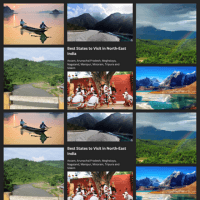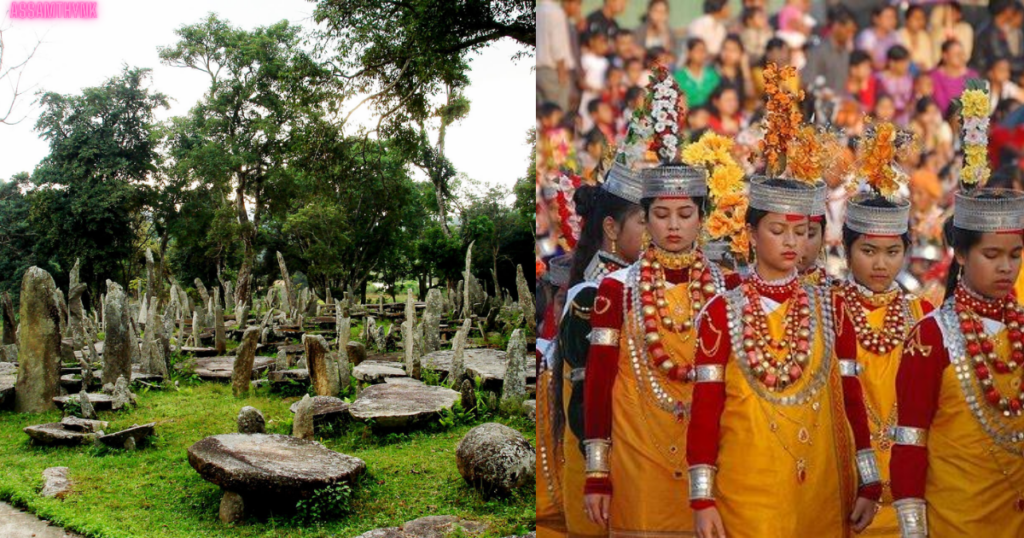Introduction
The North-East region of India is a treasure trove of natural beauty, rich culture, and ethnic diversity. Known for its scenic mountains, lush valleys, ancient traditions, and warm hospitality, it offers a unique travel experience far from the typical tourist trails. From the tea gardens of Assam to the monasteries of Arunachal and the waterfalls of Meghalaya, every state has something extraordinary to offer. In this article, we’ll take you through the Best States to Visit in North-East India, helping you discover hidden gems, must-see attractions, and the cultural heartbeat of this enchanting region.
Best Time to Visit North-East India
The Best Time to Visit North-East India is between October and May, when the weather is pleasant and the landscapes are at their most vibrant. During these months, you can enjoy clear skies, blooming flowers, and comfortable temperatures perfect for exploring the region’s hills, waterfalls, and tribal festivals.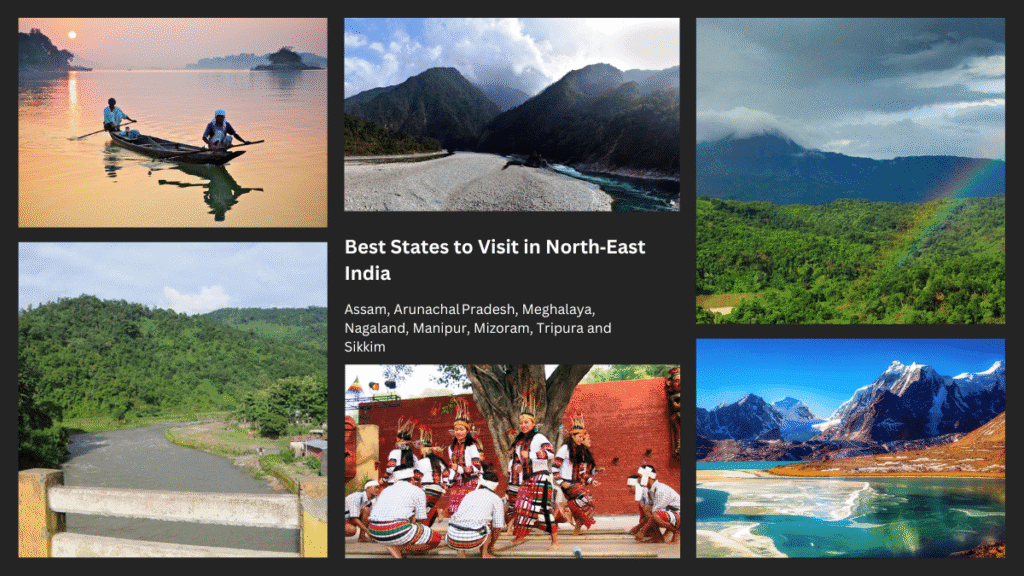
Monsoon season (June to September) brings heavy rainfall, making travel challenging due to landslides and road closures. However, if you love lush greenery and misty valleys, this can be a scenic time too. Overall, for sightseeing, adventure, and festivals, October to April remains the Best Time to Visit North-East India.
1. Assam – The Gateway and the Heart
Assam is often called the gateway to North-East India, not just because of its connectivity but due to its rich blend of nature, culture, wildlife, and history. The state is home to the mighty Brahmaputra River, which shapes the land and lifestyle of its people. From Kaziranga National Park, a UNESCO World Heritage Site famous for the one-horned rhinoceros, to the spiritual sanctity of Kamakhya Temple in Guwahati, Assam offers diverse experiences for every kind of traveller.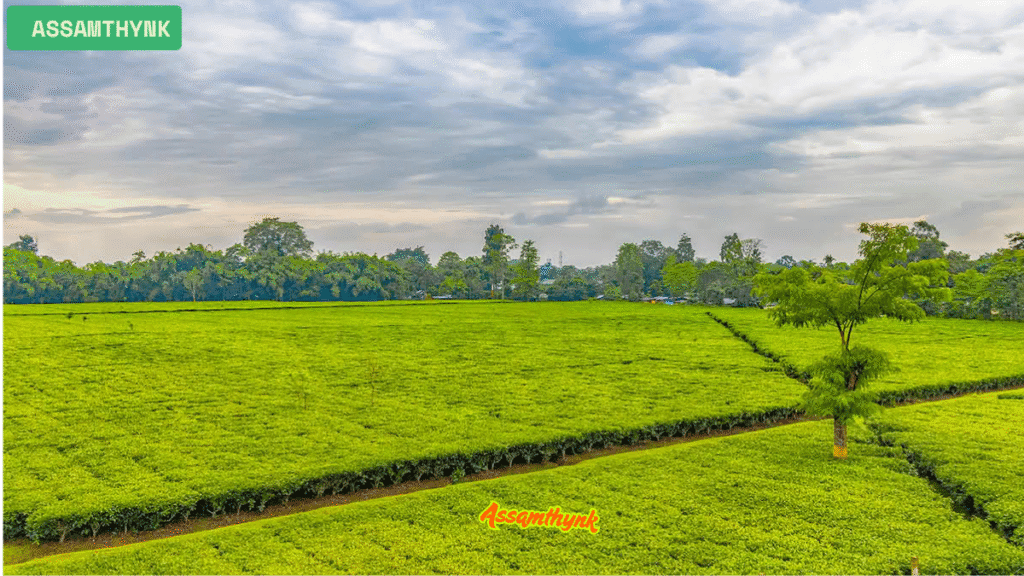
Assam’s cultural pride shines during the three Bihu festivals—Rongali bihu, Bhogali, and Kongali Bihu—which mark the agricultural calendar and are celebrated with folk dance, music, and traditional feasts. For those seeking serenity, Majuli Island, the world’s largest river island, offers peaceful monasteries (satras), mask-making traditions, and tribal life.
Tea tourism is another jewel in Assam’s crown. Places like Jorhat and Dibrugarh invite you to stay in colonial-era tea estates, watch tea-plucking in lush gardens, and enjoy a warm Assamese thali. The Assamese cuisine, with dishes like masor tenga (sour fish curry) and pitha, is a culinary delight.
How to Reach
1. Assam is easily accessible by air, rail, and road. The main gateway is Guwahati, which has an international airport with regular flights from major Indian cities like Delhi, Kolkata, and Mumbai.
2. Railways connect Assam to all parts of India. Well-maintained highways and buses link towns across Northeast India.
What to Do
1. Kaziranga National Park –
2. Majuli River Island –
Majuli, the world’s largest river island, lies on the Brahmaputra River in Assam. It is known for its Vaishnavite satras (monasteries), mask-making traditions, and vibrant tribal culture. Accessible by ferry from Jorhat, Majuli offers a peaceful retreat with scenic beauty, spiritual ambience, and rich Assamese cultural heritage.
3. Tea Tourism in Jorhat & Dibrugarh –
Jorhat and Dibrugarh are Assam’s tea tourism hotspots, offering stays in heritage bungalows, tea garden walks, and factory tours. Explore Assam’s lush estates, learn about tea-making at Tocklai Institute, and enjoy river views. October to March is ideal for experiencing the charm of these world-famous tea regions.
2. Meghalaya – Caves, Waterfalls & Living Bridges
Meghalaya, literally meaning the “abode of clouds,” is one of the most enchanting and eco-friendly states in North-East India. Known for its soaring cliffs, crystal-clear rivers, mysterious caves, and living root bridges, Meghalaya is a paradise for nature lovers and adventure seekers. The capital city, Shillong, often dubbed the “Scotland of the East,” charms visitors with its colonial-era architecture, music scene, and scenic viewpoints like Shillong Peak and Laitlum Canyons.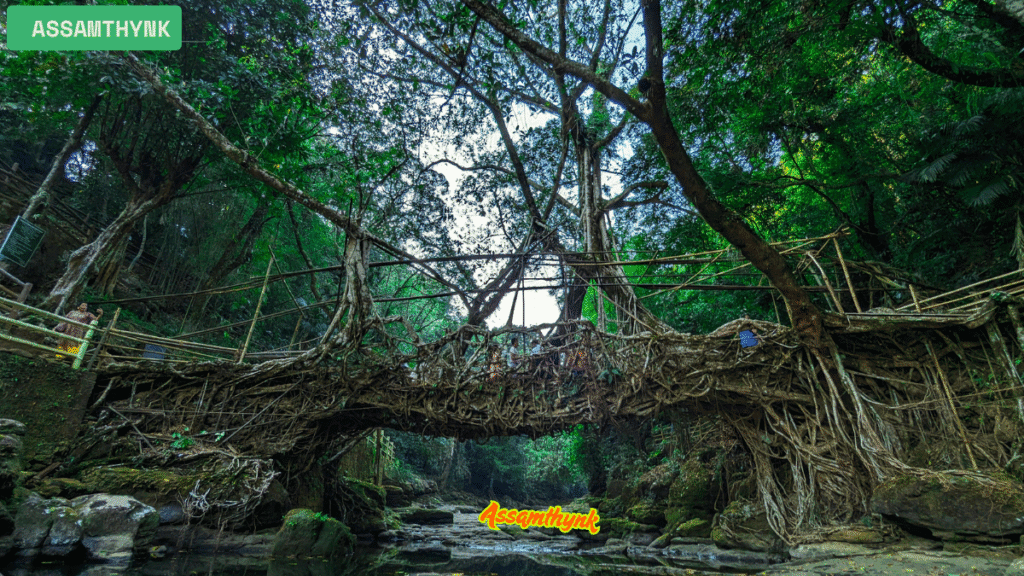
One of the state’s most iconic destinations is Cherrapunji (Sohra), famed for being one of the wettest places on Earth. It boasts spectacular waterfalls like Nohkalikai, Dainthlen, and the majestic Seven Sisters Falls. For a surreal experience, visit Dawki, where the Umngot River flows so crystal-clear that boats appear to float in the air.
Cave tourism is gaining popularity, with caves like Mawsmai, Siju, and Krem Liat Prah offering thrilling underground explorations. The living root bridges of Nongriat, built by generations of Khasi villagers using tangled tree roots, are a marvel of indigenous engineering.
Meghalaya’s tribal festivals, such as Wangala and Shad Suk Mynsiem, add cultural vibrancy. With its balance of adventure, natural beauty, and cultural integrity, Meghalaya is an unforgettable destination in the Northeast.
How to Reach
1. Meghalaya is best accessed via Guwahati Airport (Assam), located around 100 km from Shillong. From there, taxis and buses connect to Shillong in about 3 hours.
2. Shillong also has a small airport at Umroi, but with limited flights. Well-maintained roads and shared cabs link major towns like Cherrapunji and Dawki.
What to Do
Living Root Bridges –
Trek the double‑decker marvel in Nongriat or the new triple‑span near Kudeng Rim.
Cherrapunji & Mawsynram –
Asia’s highest rainfall zone with free‑falling Nohkalikai and multi‑tiered Seven Sisters waterfalls.
Cave Tourism –
Explore Krem Puri (India’s longest sandstone cave) and Krem Liat Prah.
Dawki River & Shnongpdeng –
Glass‑clear boating, cliff‑jumps, weekend riverside camping.
Festivals –
Shillong Cherry Blossom Festival (mid‑Nov) brings international indie bands amid blooming hillsides.
3. Arunachal Pradesh – India’s Final Frontier
Arunachal Pradesh, India’s easternmost state, is a land of untouched natural beauty, mystical monasteries, and vibrant tribal cultures. Often called the “Land of the Rising Sun,” it shares its borders with Bhutan, China, and Myanmar, making it one of the most geopolitically significant and culturally diverse regions of the country. With over 26 tribes and 100+ sub-tribes, Arunachal is a treasure trove of languages, rituals, and festivals.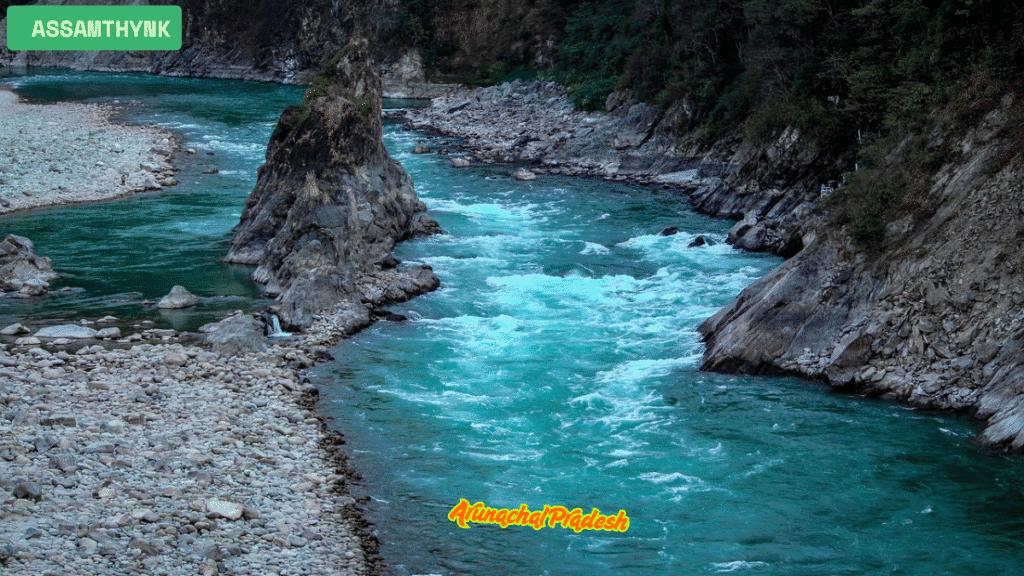
The state is home to the iconic Tawang Monastery, the second-largest in the world and a spiritual centre of Mahayana Buddhism. The dramatic drive through the Sela Pass or the newly built Sela Tunnel offers panoramic views of snow-covered peaks and frozen lakes. In the far north, Gurudongmar-like glacial lakes and high-altitude villages like Tawang and Zemithang provide a Himalayan experience without the crowds.
In the central region, the Ziro Valley is a paradise for nature lovers and cultural enthusiasts, with paddy-cum-fish farming and Apatani tribal homestays. Namdapha National Park, near the Myanmar border, is one of the world’s richest biodiversity zones.
From Losar (Tibetan New Year) to Dree (Apatani harvest festival), the state’s festivals are deeply spiritual and community-focused. Arunachal is an adventurer’s dream and a spiritual traveler’s sanctuary.
How to Reach
1. Arunachal Pradesh can be reached via Donyi Polo Airport (Itanagar) or Lilabari Airport (Assam), with connections from Guwahati and Kolkata. From these points, taxis or buses take you into the state.
2. An Inner Line Permit (ILP) is mandatory for Indian tourists. Roads are scenic but often challenging, especially in remote areas.
What to Do
Tawang Monastery & Sela Tunnel –
At 3,048 m, Sela’s new all‑weather tunnel has cut travel time from Guwahati to under 10 hours.
Ziro Valley –
Paddy‑cum‑fish farms, Apatani tribal homestays and Ziro Music Festival (late Sept).
Namdapha National Park –
One of the world’s only “four cat” parks—tiger, leopard, clouded leopard and snow leopard.
Dibang & Mechuka –
High‑altitude lakes, unexplored trekking routes and the new adventure sports hub at Mechuka.
Festivals –
Losar (Monpa New Year, Feb) and Dree (Apatani harvest, 5 July).
4. Nagaland – Tribal Culture & Festival Fever
Nagaland, nestled in the far east of India, is renowned for its rich tribal heritage, vibrant festivals, and dramatic mountain landscapes. Home to 16 officially recognized tribes, each with its own distinct language, customs, attire, and folklore, Nagaland offers a rare glimpse into indigenous cultures that have thrived for centuries.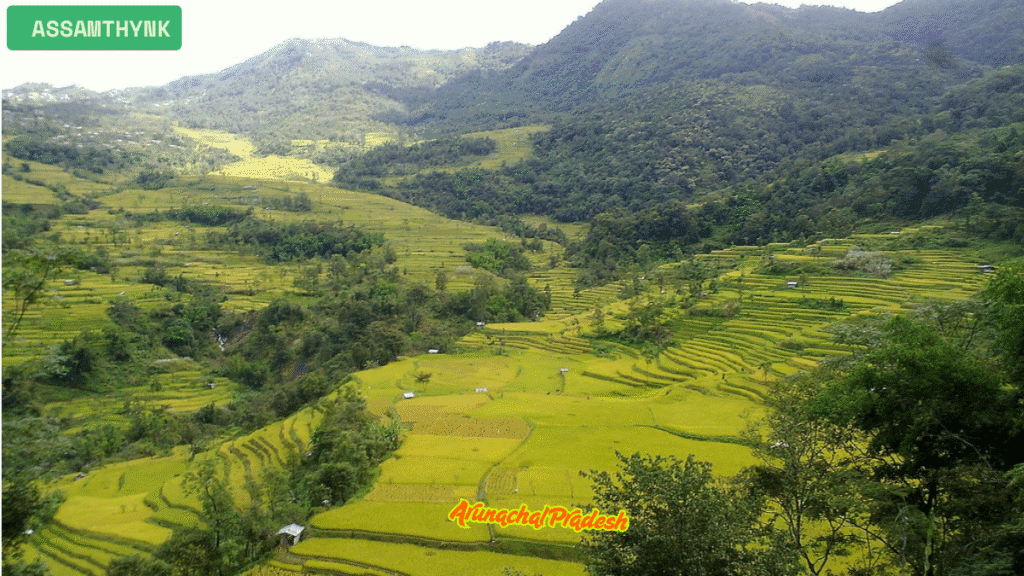
The highlight of the year is the Hornbill Festival, held every December near Kohima at the Kisama Heritage Village. Often called the “Festival of Festivals,” it’s a spectacular showcase of tribal dances, traditional music, war ceremonies, handicrafts, local cuisine, and headgear that tells stories of valor and identity. Visitors get a chance to witness the soul of Naga life in one place.
For nature lovers and trekkers, the Dzukou Valley, located on the border of Nagaland and Manipur, is a high-altitude haven known for its seasonal blooms and peaceful environment. The eco-village of Khonoma, Asia’s first green village, is a model for sustainable tourism and forest conservation.
In the far northeast, the Mon District introduces you to the legendary Konyak tribe, once known for headhunting traditions, now respected for their tattoos and craftsmanship. From culture and cuisine to nature and hospitality, Nagaland delivers an unforgettable experience that feels both ancient and alive.
How to Reach
1. Nagaland is accessible via Dimapur Airport, which has regular flights from Kolkata and Guwahati. Dimapur is also the only railhead in the state, connecting to major cities.
2. From Dimapur, taxis and buses head to Kohima and other towns. An Inner Line Permit (ILP) is required for Indian tourists.
What to Do
Hornbill Festival (1–10 Dec) –
16+ tribes showcase warrior dances, pork‑bamboo stews and handicrafts at Kisama Heritage Village.
Dzukou Valley Trek –
Rolling hillscape carpeted with endemic Dzukou lilies (Jun–Sep bloom).
Khonoma Green Village –
Asia’s first carbon‑neutral village; learn Angami terraced farming and forest conservation.
Mon & Longwa –
Konyak tattooed head‑hunter heritage straddling the Myanmar border.
Aoling & Moatsu Festivals –
Lesser‑known April and May harvest celebrations with rice‑beer gun‑salute welcomes.
5. Manipur – Jewelled Lakes & Martial Arts
Manipur, meaning the “Land of Jewels,” is one of North-East India’s most culturally rich and naturally beautiful states. Blessed with scenic hills, emerald lakes, ancient temples, and a profound artistic heritage, Manipur offers an immersive travel experience. Its capital Imphal is home to Ima Keithel, Asia’s largest all-women-run market, where thousands of Manipuri women sell everything from spices and textiles to handcrafted jewelry.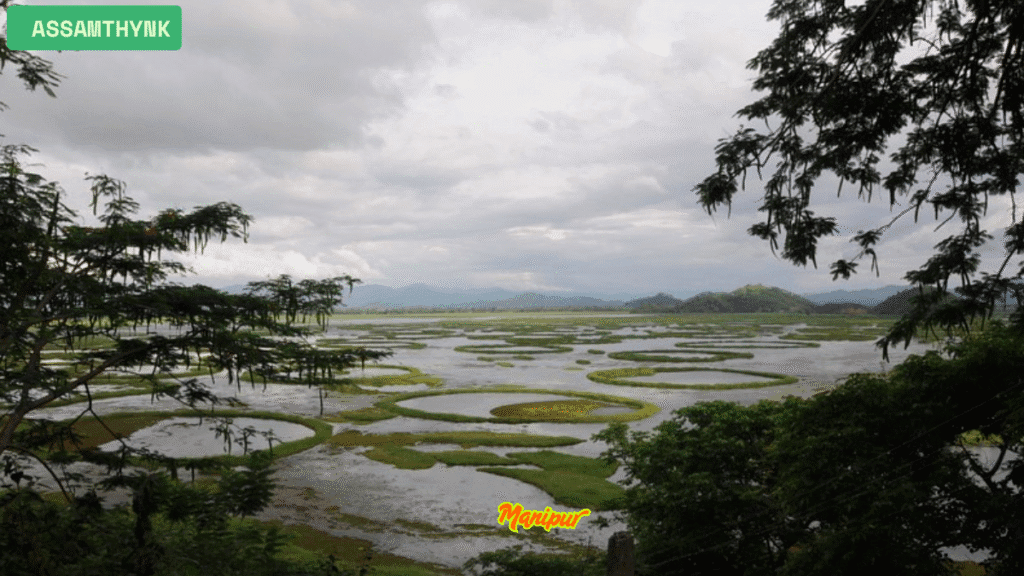
The state’s crown jewel is Loktak Lake, the largest freshwater lake in the Northeast, dotted with phumdis—floating islands of vegetation. A boat ride on Loktak offers a surreal journey, especially when visiting Keibul Lamjao National Park, the only floating national park in the world, home to the endangered sangai deer.
Manipur is also the birthplace of modern polo and Manipuri dance, both integral parts of its identity. During the vibrant Sangai Festival (held in November), visitors are treated to a state-wide celebration of culture, martial arts like thang-ta, indigenous games, handlooms, and local cuisine.
In the hill regions like Ukhrul, you’ll find the rare Shirui Lily and unique Tangkhul Naga traditions. With its blend of natural beauty, spiritual depth, and proud heritage, Manipur is truly a hidden gem waiting to be explored.
How to Reach
1. Manipur is well connected by air via Bir Tikendrajit International Airport (Imphal), with flights from Delhi, Kolkata, and Guwahati. Imphal is the main entry point for most travelers.
2. Roadways from Nagaland and Assam connect to Imphal through National Highway 2. The state also has limited rail access, under expansion.
What to Do
Loktak Lake –
Cruise among floating phumdis; spot endangered sangai deer inside Keibul Lamjao National Park.
Sangai Festival (Nov) –
State‑wide carnival of polo exhibitions, indigenous martial arts (thang‑ta) and handloom fairs.
Ukhrul’s Shirui Lily –
Trek to Shirui Peak (May) for the rare endemic lily and rock concerts.
Ima Keithel, Imphal –
Asia’s largest all‑women’s market trading hand‑woven phaneks and black pottery.
Khongjom War Memorial –
Sound‑and‑light show narrates the 1891 Anglo‑Manipuri battle.
6. Mizoram – Rolling Hills & Bamboo Trails
Mizoram, often called the “Land of the Blue Mountains,” is a picturesque state blanketed with lush green hills, bamboo forests, waterfalls, and a distinct cultural identity shaped by the Mizo people. Tucked away in the southernmost part of Northeast India, it’s a serene destination for those who seek peaceful landscapes and authentic tribal experiences.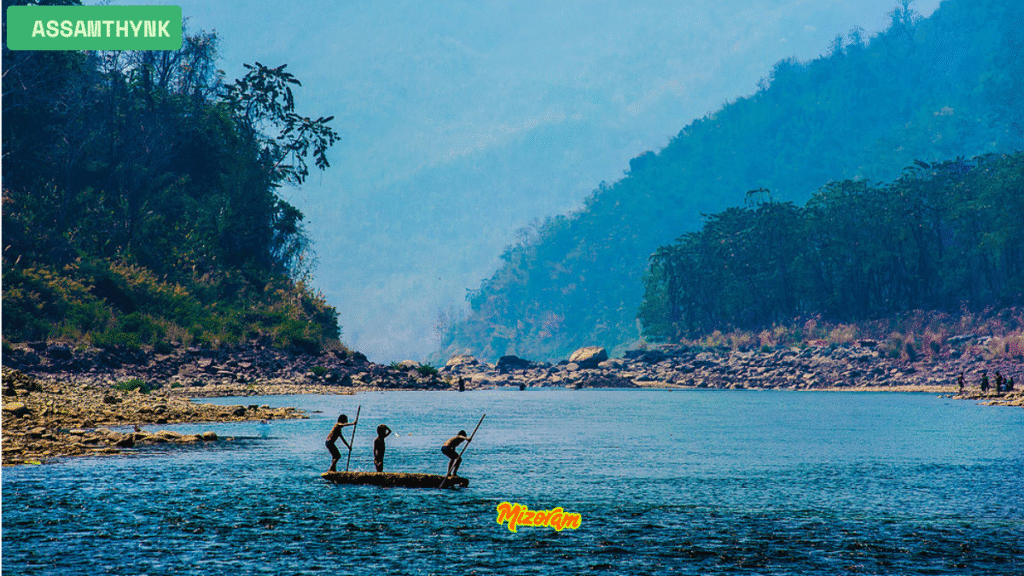
The capital city Aizawl, perched on steep ridges, offers stunning panoramic views, bustling local markets, and cultural landmarks like the State Museum and Solomon’s Temple. Just outside the city, Lalsavunga Park and Reiek Tlang provide skywalks, adventure sports, and birdwatching opportunities.
For nature lovers, Phawngpui (Blue Mountain), the highest peak in Mizoram, is a must-visit, offering scenic hikes and views of the Chin Hills in Myanmar. Vantawng Falls, cascading through dense forests, is one of the most beautiful waterfalls in the Northeast.
The Mizo community is warm, friendly, and deeply rooted in traditions. Festivals like Chapchar Kut (spring harvest) are celebrated with colorful dances, bamboo music, and traditional attire. Mizoram also boasts unique bamboo-based cuisine, including dishes like bai and smoked pork.
With its clean environment, low crime rate, and rich cultural heritage, Mizoram is perfect for eco-tourism and offbeat adventures.
How to Reach
1. Mizoram is primarily accessed via Lengpui Airport near Aizawl, with regular flights from Guwahati, Kolkata, and Imphal. It’s the most convenient way to enter the state.
2. By road, Mizoram connects to Assam (Silchar) via NH-54. An Inner Line Permit (ILP) is required for Indian tourists and available online.
What to Do
Lunglei & Lalsavunga Park –
Skywalks overlooking tropic‑lush cliffs and zip‑line circuits added in 2024.
Hike Phawngpui (‘Blue Mountain’) –
At 2,157 m, the highest point in Mizoram with views of Myanmar’s Chin Hills.
Chapchar Kut (Mar) –
Dance troupes wearing feathered vali elaborate headdresses.
Bamboo Cuisine Tours –
Sample bai (steamed bamboo shoot stew) and smoked pork in hidden roadside dhabas.
Vantawng Falls & Thenzawl Golf Resort –
Combine nature with one of India’s prettiest hill‑side nine‑hole courses.
7. Tripura – Royal Palaces & Buddhist Heritage
Tripura, India’s third-smallest state, is a hidden gem that blends royal grandeur, tribal traditions, natural beauty, and ancient heritage into a compact and captivating travel experience. Surrounded on three sides by Bangladesh, Tripura has long remained off the beaten path, but its rich history and scenic diversity are drawing more travellers than ever.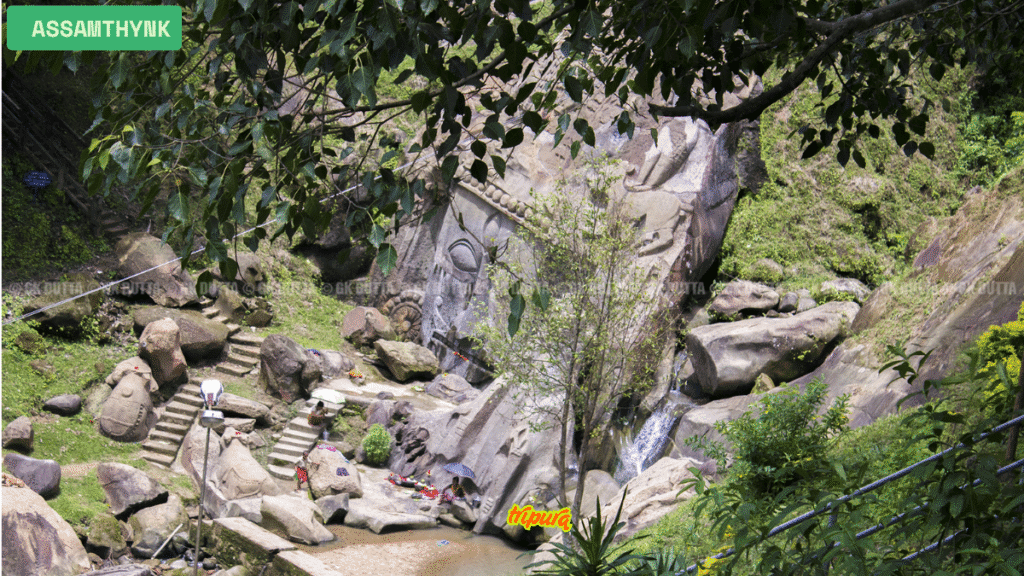
The capital city Agartala is home to the grand Ujjayanta Palace, a former royal residence built in the Indo-Saracenic style, now housing a museum that showcases Tripura’s multi-ethnic legacy. Nearby, the Neermahal Palace, often called the “Lake Palace of the East,” floats majestically on the Rudrasagar Lake, offering boat rides and sunset views.
In the lush hills of Unakoti, visitors can marvel at massive 7th–9th century rock-cut carvings of Hindu deities, etched into forested cliffs. For those interested in spirituality, the ancient Buddhist sites of Pilak, Jolaibari, and Buddha Viharas offer serene escapes.
Tripura is also known for its vibrant tribal festivals like Garia Puja, colourful handwoven textiles, and delicious tribal cuisine. Jampui Hills, with its orange orchards and panoramic views, is ideal for nature lovers. With improved roads and welcoming locals, Tripura offers an offbeat, enriching experience in Northeast India.
How to Reach
1. Tripura is accessible via Maharaja Bir Bikram Airport (Agartala), with flights from Kolkata, Guwahati, Delhi, and Bangalore. Agartala is also connected by rail to major cities in Assam and beyond.
2. By road, Tripura links to Assam and Meghalaya through NH-8. Well-connected buses and private taxis serve the region.
What to Do
Unakoti Rock Reliefs –
7th–9th century Shaivite carvings towering 30 ft in a rainforest clearing.
Ujjayanta & Neermahal Palaces –
Indo‑Saracenic white‑marble extravagance and lake‑palace boat rides.
Sepahijala Wildlife Sanctuary –
Clouded leopards and spectacled langurs in an easy half‑day detour.
Pilak & Jolaibari –
Buddhist stupas and terracotta plaques connecting the region to the ancient trade route.
Orange & Pineapple Tourism –
Eco‑resorts in Jampui Hills sweeten winter harvest season.
8. Sikkim – Himalayan Panoramas & Monastic Trails
Sikkim, India’s second-smallest and one of its most scenic states, is a Himalayan wonderland where snow-capped peaks, serene monasteries, alpine lakes, and vibrant festivals come together in perfect harmony. Bordered by Nepal, Bhutan, and Tibet, Sikkim is a melting pot of Lepcha, Bhutia, and Nepali cultures, with spirituality and sustainability at its core.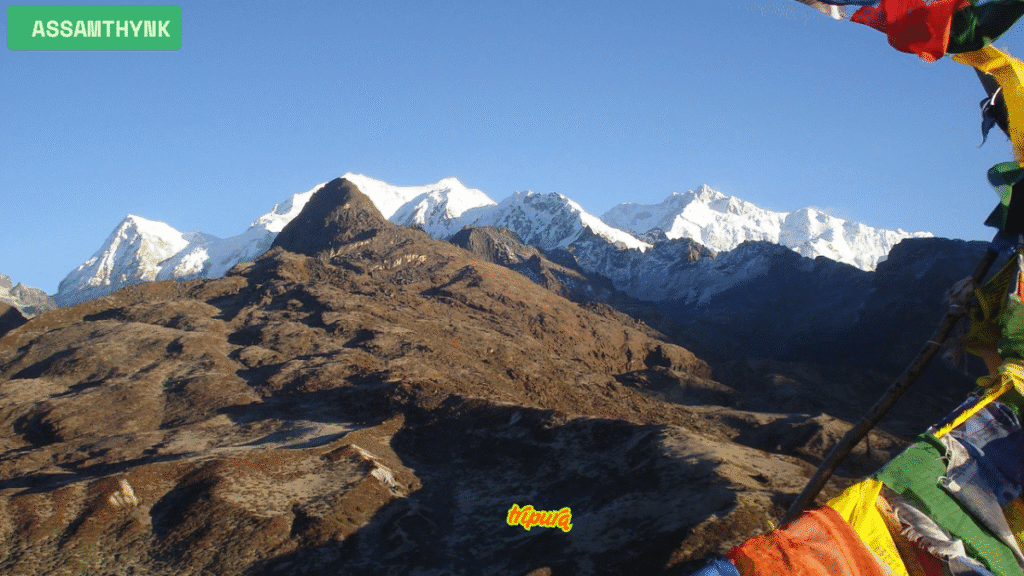
The capital city Gangtok offers a beautiful blend of modern charm and traditional elegance, with attractions like MG Marg, Rumtek Monastery, and Namgyal Institute of Tibetology. A day trip to Tsomgo Lake and Nathula Pass (a former Silk Route passage to Tibet) presents snow-draped landscapes, yak rides, and high-altitude thrills.
In North Sikkim, destinations like Lachen, Lachung, and Gurudongmar Lake (one of the world’s highest lakes) captivate visitors with their rugged beauty. The Yumthang Valley of Flowers bursts into colour during spring, rivaling even the famed valley in Uttarakhand.
For trekkers, the Goecha La Trek offers close-up views of Mount Kanchenjunga, the world’s third-highest peak. Sikkim is also India’s first fully organic state and strongly promotes eco-tourism.
With its peaceful aura, snowy adventures, and spiritual depth, Sikkim is the perfect blend of nature and nirvana in North-East India.
How to Reach
1. Sikkim can be reached via Pakyong Airport (Gangtok), which has limited flights from major cities. Alternatively, Bagdogra Airport (West Bengal) is a popular entry point, about 4–5 hours from Gangtok.
2. New Jalpaiguri (NJP) is the nearest major railway station. From both NJP and Bagdogra, taxis and shared cabs are available.
What to Do
Gangtok & Rumtek –
Cable‑car views, MG Marg cafés and the Golden Stupa at Rumtek Monastery.
Tsomgo–Nathula Pass –
Drive 3,800 m snow plains and spot Tibetan yaks (Apr–May flowers, Oct‑Dec snow).
North Sikkim –
Lachen–Gurudongmar Lake loop + Lachung’s Yumthang Valley of Flowers.
West Sikkim Trekking –
Goecha La trail for sunrise over Mt Kanchenjunga; four‑day Dzongri option for shorter legs.
Khangchendzonga Biosphere –
UNESCO Mixed Heritage Site blending Lepcha sacred sites and alpine meadows.
Essential Travel Tips for North-East India
Traveling to North-East India is a rewarding experience, but proper planning enhances your journey. Permits like ILP or PAP are required for visiting Arunachal Pradesh, Nagaland, Mizoram, and parts of Sikkim. Always carry multiple ID copies. Roads are scenic but often bumpy—especially during monsoon (June–Sept), so 4×4 vehicles are ideal in hilly areas.
Internet and mobile signals can be weak in remote zones; save offline maps and bookings in advance. Use BSNL or Airtel for the best connectivity. Most rural areas are cash-dependent, so carry sufficient cash, as ATMs are sparse. Try local food—like bamboo shoot pork, smoked fish, and black rice—but drink only filtered or boiled water.
Respect local customs, ask before taking photos, and avoid littering. October to April is the best season to visit. Support eco-tourism by choosing homestays and local guides—you’ll gain not just memories, but meaningful connections.
Conclusion
From Assam’s rhinos and tea gardens to Sikkim’s snowscapes and Nagaland’s drum‑beats, each North‑Eastern state delivers a signature flavour—be it adventure, spirituality, biodiversity or living culture. Instead of racing through all eight in a fortnight, anchor your trip around two or three neighbouring states that match your interests and festival seasons.
Plan ahead for permits, keep enough buffer days for weather, and embrace slow travel by staying in village homestays. You’ll gain not only stunning photographs but also first‑hand stories of head‑hunters turned conservationists, women‑run markets that pre‑date global feminism, and rhinos saved from the brink.
Ready to craft your own North‑East itinerary? Let me know your travel dates or preferred festivals, and I can sketch a detailed 10‑day or 14‑day plan tailored to transport links, budget and hidden gems.
Q2: What is the most scenic state in North-East India?
A: Meghalaya is often considered the best for first-timers due to its stunning landscapes, waterfalls, and accessible infrastructure. Destinations like Shillong and Cherrapunji are perfect introductions to the region.
Q2: What is the most scenic state in North-East India?
A: Arunachal Pradesh is known for its untouched natural beauty, snow-capped mountains, and remote valleys like Tawang and Ziro, making it one of the most scenic states.
Q3: Which North-Eastern state is best for cultural experiences?
A: Nagaland offers a deep dive into tribal culture, traditional festivals like Hornbill Festival, and authentic Naga cuisine, making it ideal for cultural tourism.
Q4: What is the safest state to visit in North-East India?
A: Sikkim is widely regarded as one of the safest and cleanest states, with friendly locals and excellent tourism infrastructure.
Q5: Which is the best state for adventure tourism in North-East India?
A: Arunachal Pradesh and Sikkim are top choices for trekking, mountaineering, river rafting, and other adventure activities in the Himalayas.
Q6: Which North-Eastern state has the best food for tourists?
A: Assam is a culinary delight with dishes like Assam Laksa, fish curries, and traditional thalis, making it a foodie’s paradise.
Q7: What are the best states for wildlife tourism in North-East India?
A: Assam and Arunachal Pradesh lead in wildlife experiences with Kaziranga National Park, Manas National Park, and Namdapha National Park.
Q8: Which state is best for honeymoon or romantic getaways?
A: Sikkim and Meghalaya are top choices due to their serene ambiance, cozy weather, and picturesque landscapes perfect for couples.
Q9: What is the best time to visit North-East India?
A: The ideal time is from October to May, avoiding the monsoon season. Winters offer clear skies and pleasant temperatures, ideal for travel.
Q10: Can I visit multiple North-Eastern states in one trip?
A: Yes, it’s possible. Many travellers opt for 7–10-day itineraries covering Meghalaya, Assam, Arunachal Pradesh, and Nagaland. Good planning and permits (especially for Arunachal) are essential.

